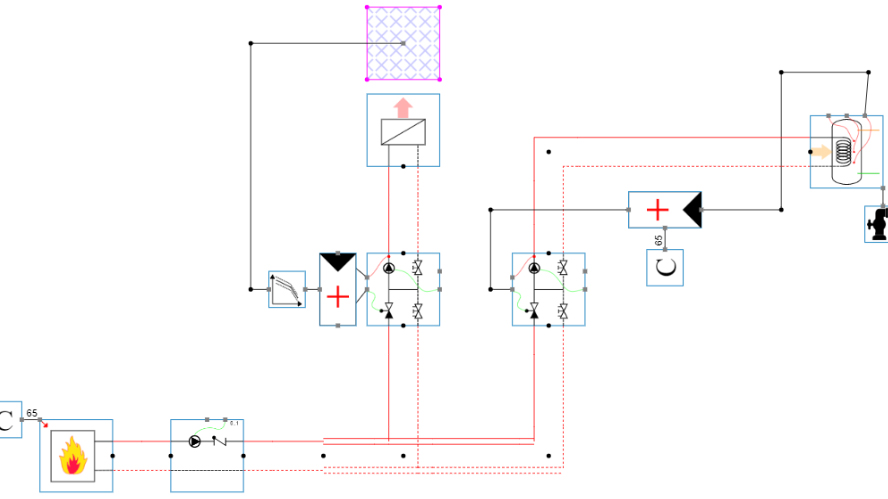Why Pump Curves Matter in Practice
A pump rarely operates at the single “design” point assumed by many spreadsheets. Instead, it follows its pump curve, which shifts whenever the system resistance changes. When a pump is oversized or controlled incorrectly, it may operate far off its optimum zone — causing excess flow, reduced ΔT and wasted energy.
When a circuit closes or a valve modulates down, the resistance drops and the pump shifts its working point. If the system was sized on the assumption of full load and constant flow, these changes produce unexpected behaviour: some zones may receive too much flow, others too little, and the pump may operate inefficiently.
How Control Strategy Influences Real-World Performance
Pump control strategy is critical. A constant-speed pump might suffice in simple systems, but in variable-flow hydronic networks it often delivers poor performance. A control mode like basic pump control — including constant head or proportional head control — allows the pump to adapt its curve based on changing flow demands.
When the control strategy and pump sizing are misaligned, you’ll likely see:
- frequent valve hunting and oscillations
- excessive flow through low-resistance paths
- low ΔT in the secondary side
- increased electricity consumption despite lower loads
In contrast, matching the pump’s curve and control logic to the hydraulic system results in stable flows, correct ΔT and energy savings.
System Dynamics: The Hidden Factor
Beyond pump and control logic, the broader hydronic system’s behaviour is key. When valves modulate, branches open or close, and loads vary, the pressure distribution and flow pathways shift. This dynamic behaviour is particularly visible when you model the system using the system-modelling workflow.
Under partial load the pump may drop into a low-efficiency region of its curve, or flow may concentrate in a less-resistant branch, starving other zones. Traditional static calculations don’t capture these shifts, which means they miss where the actual performance issues occur.
A Smarter Approach for Engineers
Rather than simply selecting a pump based on design duty point, good practice involves:
- modelling the expected flow range and how the pump curve will adapt
- defining the control strategy that aligns with variable flow behaviour
- analysing how branch modulation and valve interaction will affect the pump’s operating point
- ensuring the ΔT remains within acceptable limits and flow is distributed evenly
By combining accurate pump curve data, targeted control strategy and holistic system modelling, engineers avoid common problems: oversized pumps, unstable control loops and under-performing zones. This leads to better comfort, lower energy bills and more predictable system behaviour.
FAQ: Pump Curves & Hydronic Dynamics



.jpg)
